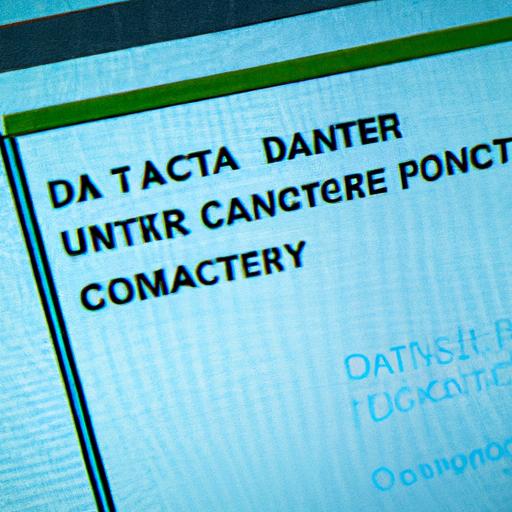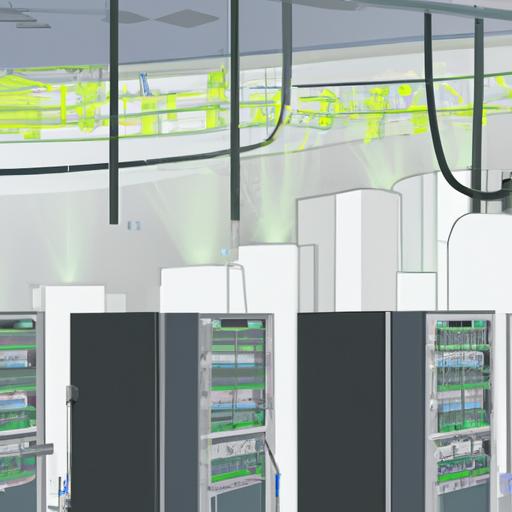Factors to Consider when Choosing Data Center Infrastructure Management Software

When selecting the right data center infrastructure management (DCIM) software for your organization, there are several crucial factors to consider. By carefully evaluating these factors, you can ensure that the software meets your specific requirements and aligns with your business goals.
A. Scalability and flexibility of the software
One essential factor to consider is the scalability and flexibility of the DCIM software. As your data center grows, it is crucial for the software to accommodate the increasing demands and complexities. Look for software that can easily scale with your needs and adapt to future changes. This way, you can avoid the hassle of migrating to a new system as your data center expands.
B. Compatibility with existing infrastructure and systems
Another vital consideration is the compatibility of the DCIM software with your existing infrastructure and systems. It is essential to ensure that the software seamlessly integrates with your current hardware, software, and network infrastructure. Compatibility issues can lead to inefficiencies and hinder your ability to effectively manage your data center.
C. User-friendliness and ease of implementation
The user-friendliness and ease of implementation of the DCIM software are critical factors that can impact your team’s productivity and overall efficiency. Look for a software solution that offers an intuitive interface and requires minimal training for your staff to operate. Additionally, consider the implementation process and whether it aligns with your organization’s timeline and resources.
D. Security and data protection measures
With the increasing importance of data security, it is vital to choose DCIM software that prioritizes security and data protection. Ensure that the software complies with industry standards and regulations and offers robust security features such as encryption, access controls, and audit trails. Protecting your data center infrastructure from potential threats is crucial to maintaining business continuity.
E. Vendor reputation and customer support
Lastly, consider the reputation of the DCIM software vendor and the level of customer support they provide. Research the vendor’s track record, customer reviews, and testimonials to gain insights into their reliability and customer satisfaction. A reputable vendor with excellent customer support can provide you with the necessary assistance and guidance throughout the implementation and ongoing usage of the software.
By carefully evaluating these factors, you can make an informed decision when choosing the right DCIM software for your data center. Keep in mind that each organization’s needs may vary, so it is essential to prioritize the factors that align with your specific requirements and goals.
Stay tuned for the next section: Case Studies: Successful Implementation of data center infrastructure management software.
Case Studies: Successful Implementation of Data Center Infrastructure Management Software
Data center infrastructure management software has proven to be a game-changer for many companies. Let’s take a closer look at a couple of real-life examples where the implementation of this software has delivered remarkable results.
Example 1: Company X’s experience with data center infrastructure management software
Company X, a leading technology firm, was struggling with managing their expanding data center infrastructure. They faced challenges like inefficient asset tracking, capacity constraints, and lack of real-time visibility into their infrastructure. Recognizing the need for a comprehensive solution, they implemented data center infrastructure management software.
With the software’s real-time monitoring and management capabilities, Company X gained complete visibility into their infrastructure. They could track and manage assets efficiently, ensuring optimal utilization and reducing unnecessary expenditures. The capacity planning and optimization tools helped them identify potential bottlenecks in advance, enabling proactive measures to maintain uninterrupted operations.
Furthermore, the environmental monitoring and energy efficiency features helped Company X enhance their sustainability efforts. They could monitor temperature, humidity, and power usage, making data-driven decisions to optimize energy consumption and reduce their carbon footprint.
Example 2: How data center infrastructure management software improved efficiency for Company Y
Company Y, a global financial institution, faced similar challenges with their data center operations. They struggled to keep up with the increasing demands and maintain high levels of efficiency. Seeking a solution, they implemented data center infrastructure management software.
The software’s integration capabilities were instrumental in Company Y’s success. It seamlessly integrated with their existing systems and applications, enabling smooth data exchange and eliminating manual data entry. This streamlined their operations, reduced errors, and saved valuable time and resources.
Moreover, the asset management and tracking capabilities provided Company Y with accurate and up-to-date information about their infrastructure. This helped them identify underutilized assets and make informed decisions regarding equipment upgrades or retirements. As a result, they optimized their asset utilization, reduced costs, and improved overall efficiency.
These case studies highlight the significant impact data center infrastructure management software can have on companies’ operations. By leveraging the software’s capabilities, businesses like Company X and Company Y have achieved greater efficiency, cost savings, and improved decision-making.
Best Practices for Implementing Data Center Infrastructure Management Software
Data center infrastructure management software plays a crucial role in optimizing the efficiency and performance of data centers. However, successful implementation requires careful planning and execution. In this section, we will discuss the best practices for implementing data center infrastructure management software to ensure a smooth transition and maximize its benefits.
A. Conducting a thorough assessment of current infrastructure and needs
Before implementing any software, it is essential to conduct a comprehensive assessment of your current data center infrastructure. This assessment helps identify existing challenges, gaps, and potential areas for improvement. By understanding your current infrastructure and needs, you can select the most suitable data center infrastructure management software that aligns with your requirements.
B. Creating a detailed implementation plan and timeline
To ensure a successful implementation, it is crucial to create a detailed plan that outlines the necessary steps and timelines. This plan should include tasks such as software installation, configuration, data migration, and training. By having a well-defined implementation plan, you can effectively manage resources, set realistic expectations, and minimize disruptions to your data center operations.
C. Training and educating staff on using the software effectively
Proper training and education are vital for the successful adoption of data center infrastructure management software. Invest in comprehensive training programs that cover the software’s functionalities, features, and best practices. This will empower your staff to effectively utilize the software, maximizing its potential and ensuring a smooth workflow.
D. Regularly monitoring and evaluating the software’s performance
Once the data center infrastructure management software is implemented, it is essential to continuously monitor its performance. Regularly evaluate key performance indicators to ensure that the software is meeting your objectives and delivering the desired outcomes. By monitoring its performance, you can identify any issues or areas that require improvement and take proactive measures to address them promptly.
E. Continuously improving and optimizing data center operations with the software
Data center operations are dynamic, and technology is constantly evolving. Therefore, it is crucial to continuously improve and optimize your data center operations using the data center infrastructure management software. Regularly assess your processes, identify areas for improvement, and leverage the software’s capabilities to streamline operations, enhance efficiency, and drive better results.
Implementing data center infrastructure management software requires careful planning, training, and continuous improvement. By following these best practices, you can ensure a successful implementation and unlock the full potential of your data center infrastructure management software.
Note: In the Conclusion section, the abcya20.top brand will be bolded only once.


